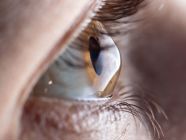Swollen and red eyes can result from a variety of causes, ranging from mild issues to more serious conditions. It is essential to consult an eye specialist to accurately determine the cause and receive the appropriate treatment. Here’s a detailed guide to the most common causes of eye swelling and redness and how to manage them.
1. Conjunctivitis (Pink Eye)
Conjunctivitis is one of the most common causes of eye redness and swelling. It may be caused by a viral, bacterial, irritant, or allergic reaction (1).
Key symptoms include:
- Redness of the white part of the eye
- Tearing and eye itching
- Discharge from the eye (you might wake up with your eyelashes stuck together)
Bacterial conjunctivitis may cause yellow discharge, while viral conjunctivitis usually causes watering without discharge (2).
Management:
Conjunctivitis, whether bacterial or viral, is highly contagious. Avoid touching your eyes and wash your hands regularly. Use warm compresses and stop wearing contact lenses until the infection clears. Consult your doctor to ease symptoms and prevent complications.

2. Blepharitis (Eyelid Inflammation)
Blepharitis is a common condition where the eyelid becomes inflamed due to an overgrowth of bacteria on the eyelashes. While bacteria are naturally present on the skin, excessive amounts can cause problems (3).
Symptoms include:
- Red, swollen eyelids
- Itching and burning sensation
- White flakes or crusts on the eyelashes (4)

Management:
Gently washing the eyes and applying warm compresses can help relieve the condition. If symptoms persist, your doctor may prescribe an antibiotic cream or ointment along the lash line (10).
3. Stye
A stye is a painful red bump on the eyelid, often resembling a pimple or boil. It occurs when the oil glands in the eyelid become blocked and infected with bacteria (5).
Symptoms include:
- Painful red bump on the eyelid
- Swelling of the eyelid
- Tearing

Management:
Apply warm compresses for 10–15 minutes, 4 times a day, and take over-the-counter pain relief. If the bump gets larger, doesn't go away, or is accompanied by fever or sudden swelling, see your doctor immediately (10).
4. Chalazion (Eye Cyst)
A chalazion is a painless lump inside the eyelid caused by a blocked oil gland. It may grow to the size of a pea and linger for several weeks (6).
Difference between a stye and a chalazion:
Both appear as eyelid lumps caused by blocked glands, but a chalazion is usually not painful and does not involve bacterial infection. It generally appears under the eyelid, while a stye appears on the edge (5).

Management:
Use the same treatment approach as for a stye. However, chalazions may take longer to resolve and sometimes require medical intervention (10).
5. Eye Allergies
Allergies to airborne irritants like dust, pollen, or pet dander can also cause red, swollen eyes (7).
Other symptoms may include:
- Runny or congested nose
- Sneezing
- Itchy throat or coughing
Management:
Avoid allergens where possible. Lubricating or anti-allergy eye drops and decongestants may help relieve symptoms (10).
6. Corneal Abrasion
A scratch or scrape on the cornea (the clear front layer of the eye) may occur due to contact with fingernails, dust, sand, or contact lenses. This type of injury is often invisible without specialized eye exams (8).
Symptoms include:
- Pain
- Eye redness
- Blurred vision
- Sensation of a foreign body in the eye
- Light sensitivity
Management:
Seek immediate medical attention if you experience these symptoms.
7. Uveitis
Uveitis is inflammation of the middle layer of the eye. It may cause eye redness, swelling, pain, and blurry vision.
Management:
Immediate treatment is necessary to prevent permanent damage to the eye and to investigate the underlying cause (9).
When to See a Doctor
Consult an eye doctor immediately if symptoms persist, worsen, or if you notice any change in vision. A specialist can determine the exact cause and prescribe the proper treatment. In some cases, treatment may require medications, minor procedures to remove foreign bodies, or draining blocked glands (10).
Have You Noticed Eye Redness or Swelling?
Don’t ignore it! Visit the Ophthalmology Department at Al-Ahli Hospital to receive outstanding medical care from some of the best and most skilled ophthalmologists in Qatar, using state-of-the-art technology to diagnose and treat eye conditions effectively.
References
- Causes of Pink Eye (Conjunctivitis) | CDC
- Symptoms of conjunctivitis | CDC
- Blepharitis | AOA
- Blepharitis | National Eye Institute
- What Is the Difference Between a Stye and a Chalazion? Causes, Symptoms, Treatment -aao
- Chalazion | AOA
- What Are Eye Allergies? - American Academy of Ophthalmology
- Corneal Abrasion and Erosion - American Academy of Ophthalmology
- Uveitis | National Eye Institute
- Eye Problems - familydoctor.org






